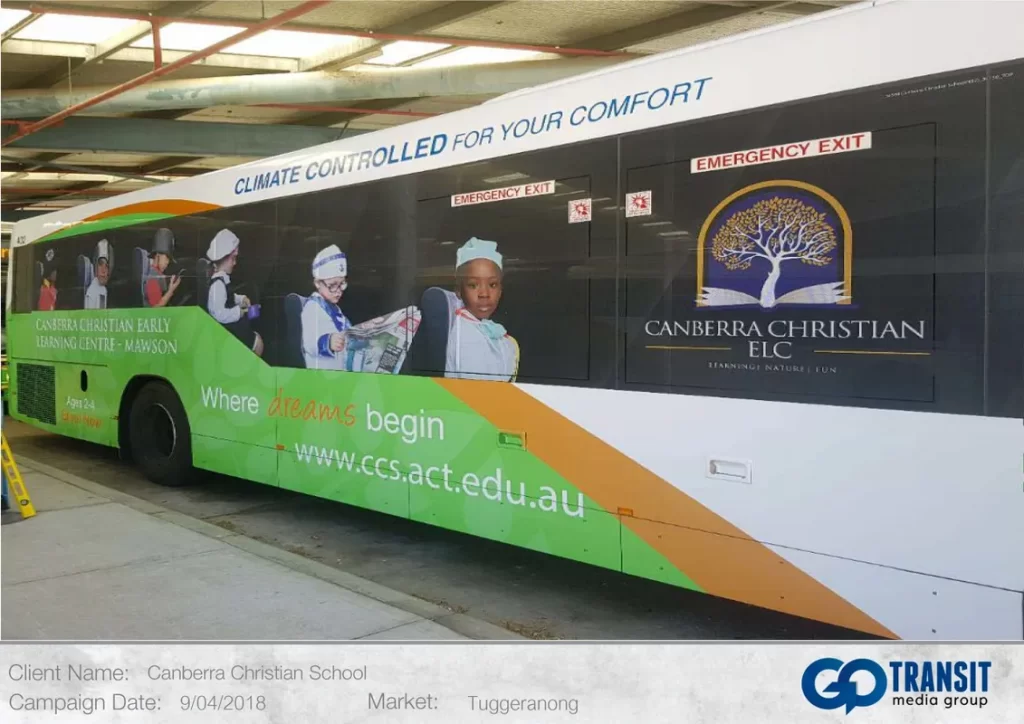
When it comes to graphic design print solutions for very large spaces like a bus, several considerations need to be taken into account to ensure effective visual impact and durability. This article discusses key factors to consider and offers insights into the process of designing and implementing graphics for large-scale bus advertising.
- Size and Scale: The first step in designing graphics for a bus is understanding the dimensions and scale of the vehicle. Buses offer a significant canvas for visual storytelling, but it’s important to ensure that the design elements are appropriately sized and scaled to fit the vehicle’s contours and dimensions. Working with a professional graphic designer experienced in large-format printing is crucial to ensure accurate measurements and a visually pleasing end result.
- High-Quality Resolution: To achieve clear and sharp visuals on a large-scale medium like a bus, it’s imperative to use high-resolution graphics. Design elements, including text, images, and logos, should be created in a resolution that can withstand the enlargement process without pixelation or loss of clarity. Vector-based graphics are preferred for scalability, as they can be scaled to any size without compromising quality.
- Attention-Grabbing Design: Bus graphics need to capture attention quickly, considering that they are often in motion and competing with other visual stimuli in the urban environment. The design should incorporate bold colors, striking visuals, and concise messaging to instantly engage viewers. It’s essential to consider the target audience and the message the bus advertising aims to convey, ensuring the design aligns with the brand identity and the intended impact on viewers.
- Brand Consistency: Consistency with the overall brand identity is vital in bus advertising. The graphics should reflect the brand’s visual language, including the logo, color scheme, typography, and brand messaging. Consistency across all marketing touchpoints reinforces brand recognition and ensures that the bus advertisement is easily associated with the brand, both on and off the bus.
- Weather Resistance and Durability: Buses are exposed to various weather conditions, including sun, rain, and snow. Therefore, the materials used for the graphics must be weather-resistant and durable. Vinyl wraps are commonly used for bus advertising due to their ability to withstand outdoor elements. UV-resistant inks should be utilized to prevent fading and maintain the vibrancy of the graphics over time.
- Strategic Placement: Consideration should be given to the placement of graphics on the bus to maximize visibility and impact. Key areas such as the sides, back, and windows of the bus offer prime real estate for branding and messaging. Designers should strategically plan the placement of important information, such as the company name, logo, and contact details, to ensure they are prominently displayed and easily readable by viewers.
- Compliance with Regulations: Before proceeding with bus graphics, it is essential to research and comply with local regulations and guidelines regarding advertising on public transportation. Each region may have specific requirements related to the size, placement, and content of bus advertisements. Working closely with the transportation authority or a professional signage company can help ensure compliance with the necessary regulations.
- Installation and Maintenance: Professional installation is recommended to ensure a seamless and secure application of the graphics onto the bus. Proper installation techniques prevent bubbles, wrinkles, or peeling, which can compromise the appearance and longevity of the graphics. Regular maintenance and cleaning of the bus graphics are also important to maintain their visual impact and extend their lifespan.
Conclusion: Designing graphics for very large spaces like buses requires careful consideration of size, resolution, visual impact, brand consistency, durability, and compliance with regulations. By working with experienced graphic designers and signage professionals, businesses can create visually striking bus advertisements that effectively promote their brand, capture attention, and make a lasting impression on the viewers in urban environments.

